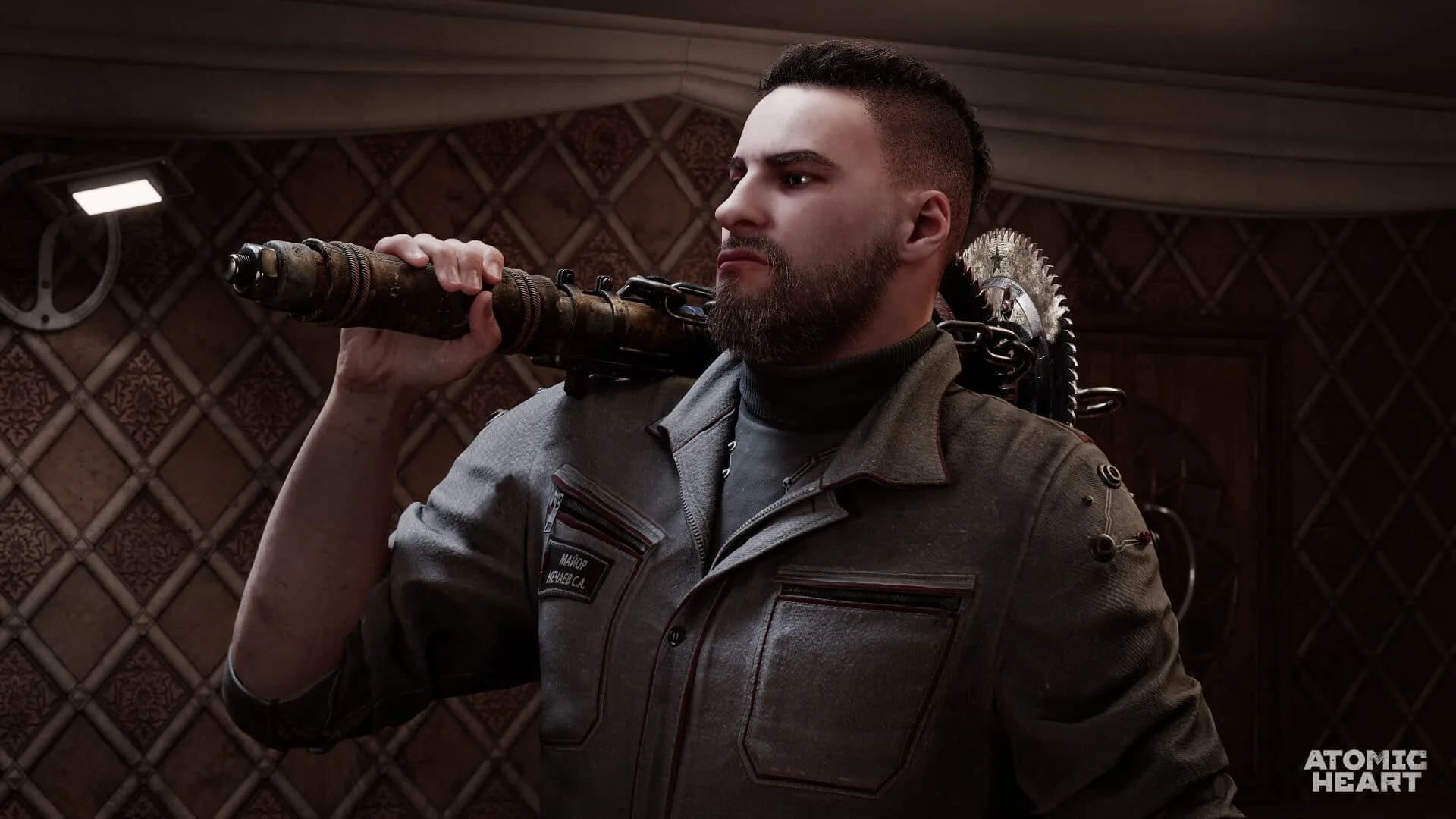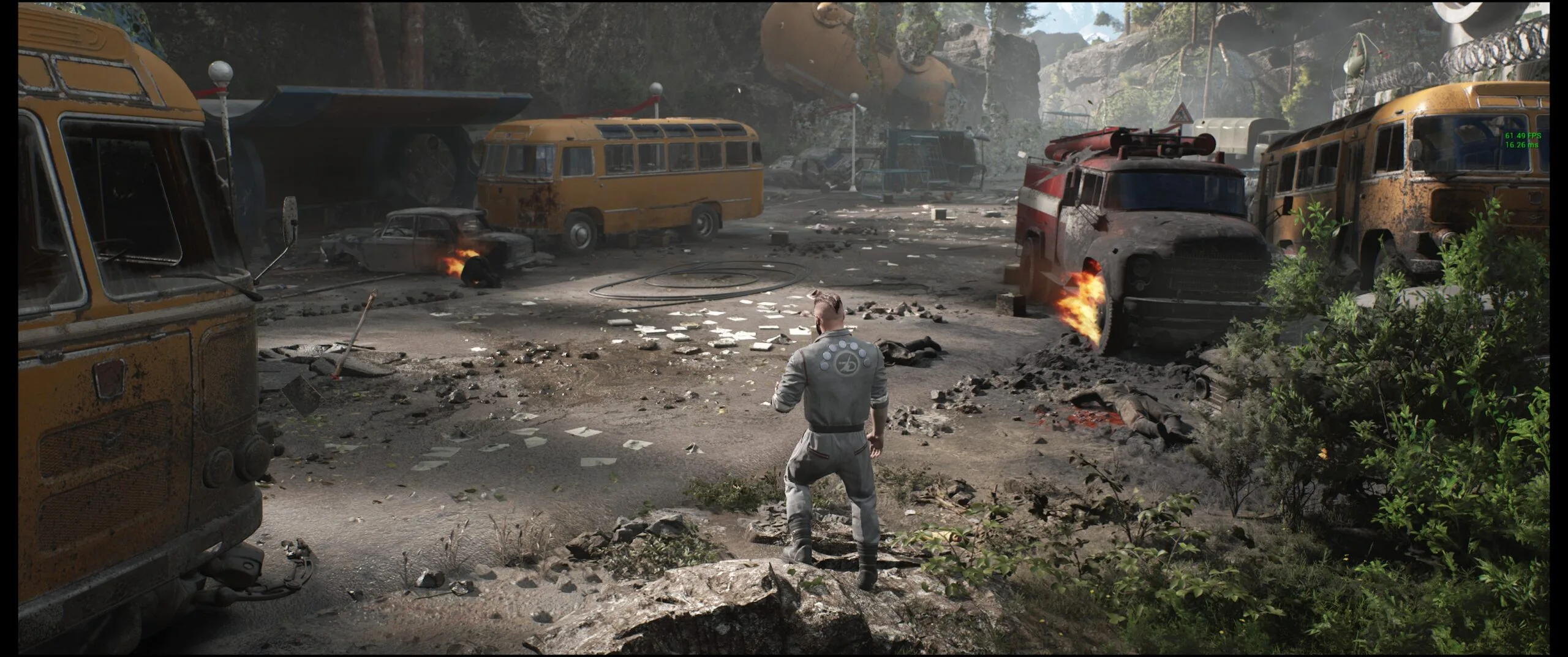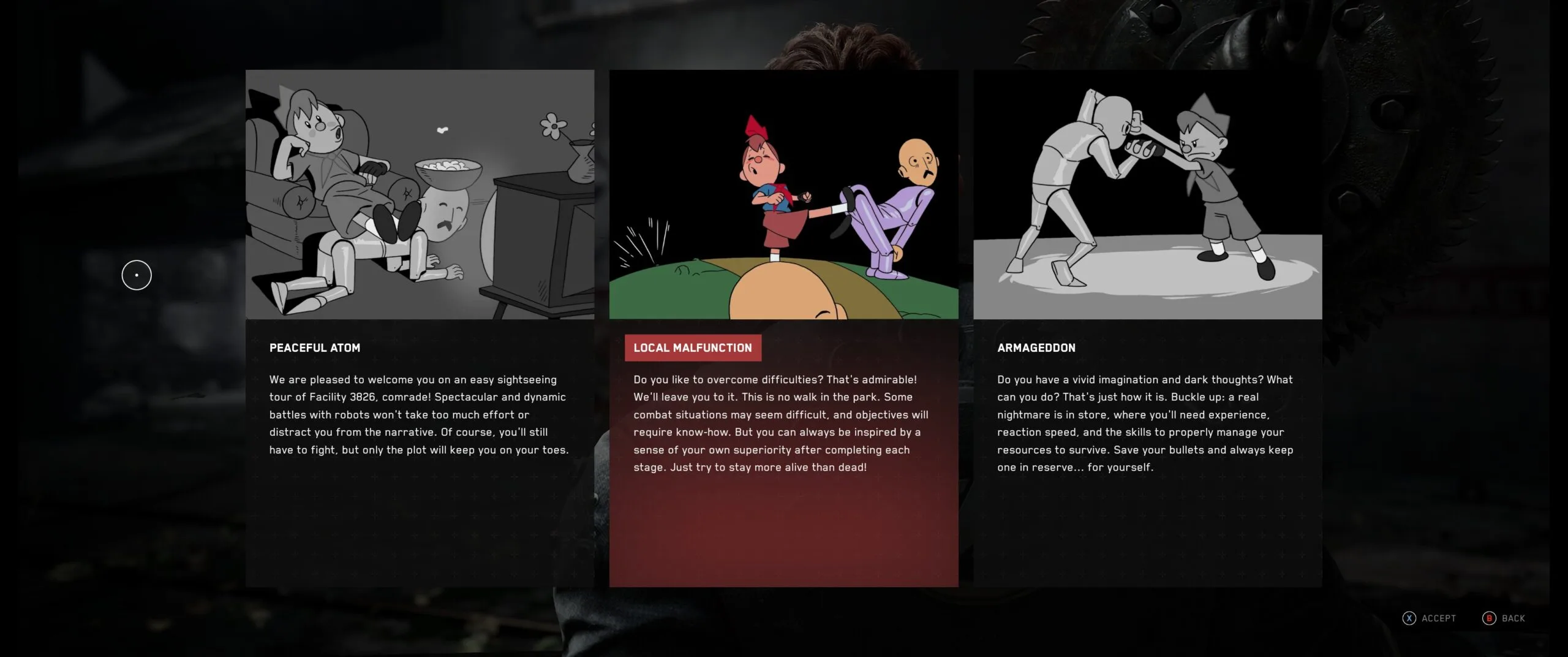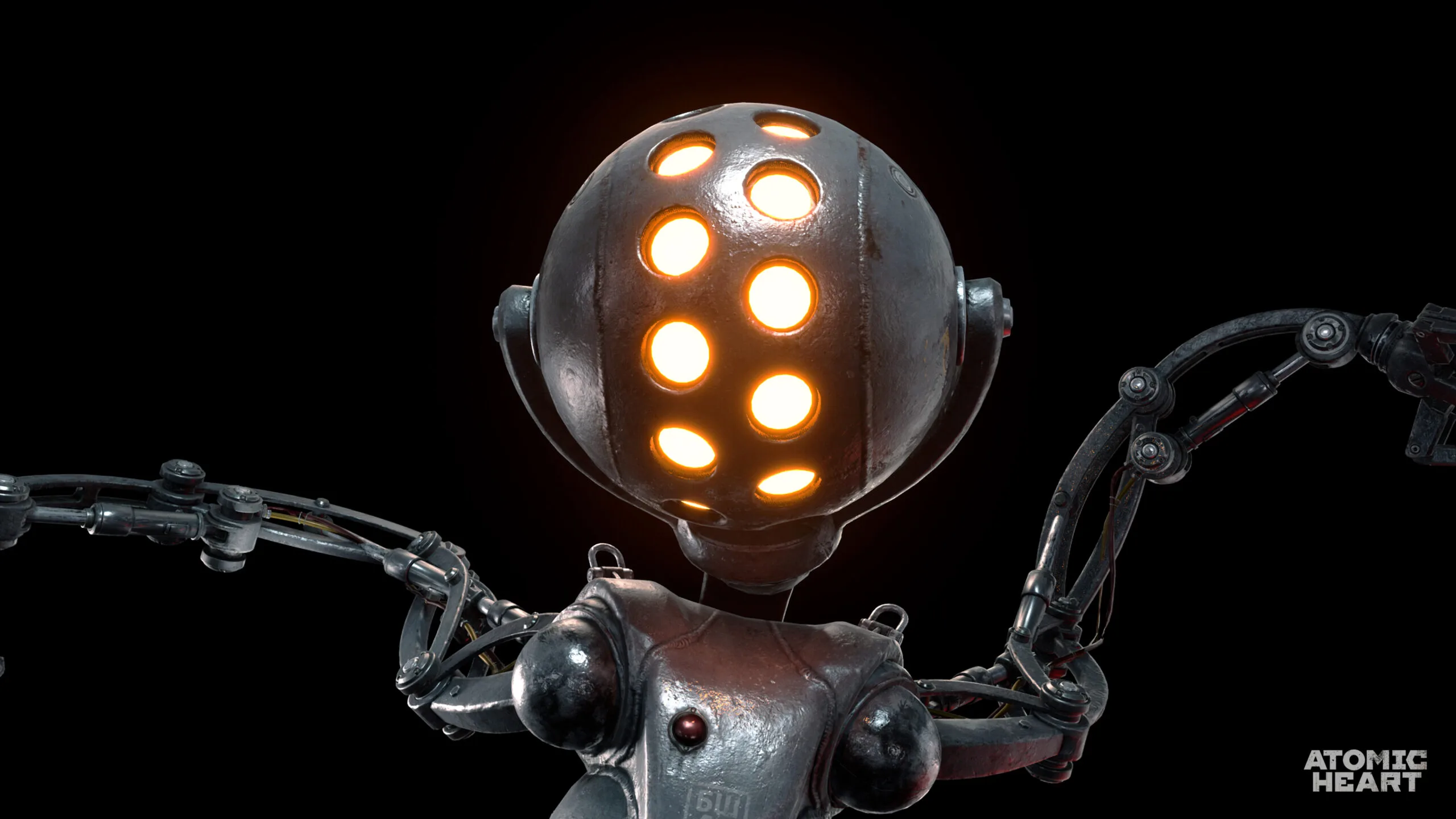Atomic Heart is a Great but Flawed Experience
If you had a video game mixer and mashed Duke Nukem, Far Cry, and Bioshock together you would end up with Atomic Heart. This amalgamation results in a game filled with wondrous future tech and human augmentation coupled with gritty fun combat mixed with crass humor.
Beyond being Sci-Fi first-person shooters, these games depict their own versions of alternate universes or worlds in which technology meant to create a utopia goes sour. That is a tall order to fill and Atomic Heart does it very well – It’s fast-paced, fun to play and well-optimized. Atomic Heart is one of the weirdest and most fun games we have played so far this year and it wears its inspirations well.
Atomic Heart, is Mundfish’s debut title which started development 5 years ago. It places KGB agent “P-3” into an alternate future in which the Soviet Union has mastered robotics to defeat Nazi Germany and end to World War 2. Its singular focus is on the setting – a post-war Soviet retro-futuristic world where Russia has created augmentation and has made significant scientific leaps for “all mankind.”
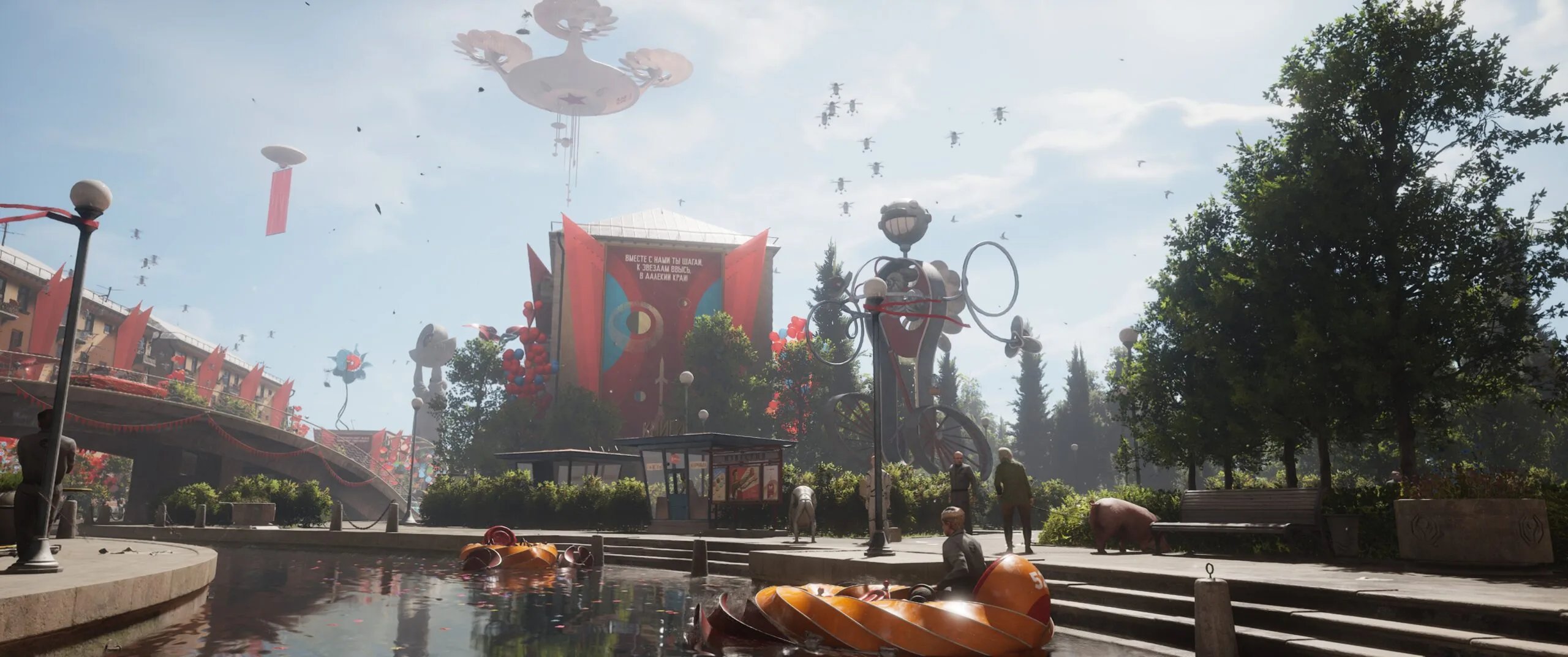
Russian scientists have decided to share their creations for a better world where AI bots do things like bring you a soda, deliver packages, and take your group photos on a tour. They are primarily concerned with how the world views them while maintaining an aura of perfection. Their next advancement plans to combine human brain power and knowledge instantly while maintaining ones own personal experiences and memories. Their goal is to integrate all human collective intelligence into one so our advancements will skyrocket.
These Russian scientists have augmented humans’ entire life with these AI bots. However, a traitor makes the AI believe that every human is an invader and should be treated as a threat. A security hole in the software leads the AI to turn on humans and thus begins our journey.
Political concerns aside, when you play the game you quickly learn it ridicules the Soviet Union although it remains heavy on propaganda. This is barely distracting. This Bioshock-like Soviet shooter, Atomic Heart, is well worth your time and the positive hype is real. The 20+ hour campaign and 15+ hours of side quests are filled with memorable moments and great action set pieces using the backdrop of super-tech and beautiful graphics.
Gameplay -An Inspired False Utopia
A game that takes such obvious inspiration from other major franchises may have been bland and boring. Yet Mundfish hits the ball out of the park for most gamers. Atomic Heart is content to be a single-player experience filled to the brim with some of the most unique design elements of the last two decades.
The intricate detail in Atomic Heart is astounding although some environmental touches could have used more work. Gamers generally want to see fire hydrants fly violently across the room after shooting them or hitting them. Details like this are missing and environmental destruction is minimal at best. Your main weapon is an ax at the start of the game – you will want to whack everything but nothing happens most of the time.
Instead, the astounding visual and audio design was the obvious focus. A game can rest on its gameplay loop quite easily, but a game like Atomic Heart shines in its enemy and environmental design. The enemy robots that have suddenly turned on us vary from mustachioed robots to towering iron giants and giant destroyer Drioideka-like ball enemies that are terrifying to face. Combating them requires using Polymer which is the main source of Russian innovation and also P-3’s power. This substance allows you to use Doom-like future weaponry in your right hand while having Char-Les your buddy AI and augmentation on your left. Your left hand acquires additional powers that you can add like an electric shock, freezing enemies, or covering them in polymer to make them susceptible to the elements.

Mix in some stealth, great movement, and upgrade paths and the game is a blast to play. The issues come in with some of the acting and generic American leads. The game features 9 voice-overs and 13 subs with around 1.5 hours of cinematics. Contrary to recent rumors, there is no 6 hour robot sex scene. The game set in old Soviet Russia has the iconic look and feel of the time but it quickly turns into cookie-cutter territory after you hear the main character’s voice.
We needed an English voice over for obvious reasons, but the audio tracks sometimes feel like they weren’t being spoken live by our character, and an audio track was just played in our ear. Many voices feel this way but our main character, P-3 is often making Duke Nukem-like jokes while robots offer sexual innuendos or funny responses. At times the moments were great and at other times the voice acting took away from the game’s unique settings and turned it into a generic comedy.
A game that borrows from others but is a master of none describes Atomic Heart. The story often feels bigger than what the game can deliver. It had the potential to do a lot more with the environment or platforming but instead, it felt lacking the deep complexities of the greatest games preceding it. Some of the puzzles and boss fights are memorable while others are easily forgotten as mere blockades to the story’s advancement.
It’s possible to look perfect yet still need work.
2023 already delivered us a Game of the Year contender in Hogwarts Legacy, and while Atomic Heart does so many things well, its many limitations hold the game back. Atomic Heart has one of the best openings in recent memory that is as breathtaking as the descent into Rapture in Bioshock.
This backdrop is so strangely good it baffled our mind by its poor scripting at times. We will probably see review scores varying from nearly perfect to low because of the writing and poor English voice acting. The classic games we know stay in our minds forever because of their extreme attention to details demonstrating that small things matter. Doom, Halo, and Deus-Ex, all immerse you into their world and make you want to live there and feel a part of it. Unfortunately, Atomic Heart lacks that deep immersion despite its ambitious design and great ideas. Without spoilers, it is difficult to explain but its mix of great beauty combined with bad writing and poor voice acting may become cumbersome during its 20 hours campaign.
Agent P-3 is the epitome of toxic masculinity in an awesome background, much like inserting Duke Nukem into Bioshock’s Rapture. Skills, crafting, upgrades, and the combat formula work so well together that it becomes frustrating to have to deal with cumbersome looting. A sleazy kiosk that offers sexual advances will either be hilarious to you or make the game fall flat. Atomic Heart has sexy robots, visceral combat, plus unique and massive bosses, but they can feel like bullet sponge hell with endless enemies and overlong sections.
There is so much junk in every room that you require for crafting that Mundfish built in a single key press function to suck all the junk out of every drawer. If this feature did not exist and we had to check each drawer on its own, our review score would plummet. This open world can often feel like it isn’t open. Bioshock’s Rapture worked because it was one large setting filled with excitement around every corner. Facility 3826 is similar as it felt amazing to discover what was happening inside, but the issues arise when you travel outside to new locations offering little discoverability in between quest-gathering. We also had many many crashes and bugs in our playthrough, with most of them coming while interacting with the upgrade bot or during combat. Most of this may be fixed with future patches, but for gameplay’s sake, we suggest running the Russian voiceover with English subtitles.
The Atomic Heart open-world segments are best to run past. There are no immersive sim elements. Instead, you just zap or freeze NPCs and engage in combat with large enemy groups. The problem is that this open world is littered with endlessly respawning enemies that make it oppressive and not fun to engage. You can waste all your ammo for no reward. Camera systems that have worked in previous games to alert enemies of your presence could have been used to create cool set pieces and memorable intense battles.
In game, the enemy density is so high that stealth is rarely an option, and if you destroy a camera or enemy – no matter if it took you seven or more bullets to destroy – a repair drone is dispatched to bring it right back to life. The only way to stop this is to find the security system which will only temporarily disable it. The game is best enjoyed driving or running past most of the open world to the next objective. This means that the open world simply does not work. Couple this with awkward writing and poor voice acting, along with endless juvenile interactions and Atomic Heart never realizes its game-of-the-year potential. I am not sure this can be patched and it stops me from scoring it higher.
Steam Deck with FSR / DLSS 3 Shines Bright
So how does it run? Amazingly well and something I am ecstatic to experience after the recent rash of stutter-ridden and clunkly PC ports. Atomic Heart takes advantage of Nvidia DLSS 3 which is the next revolution in graphics that are only available in the 40xx series of RTX cards. By using “Frame Generation,” DLSS 3 increases performance while maintaining almost perfect image quality. This salvaged our framerates at Hogwarts Legacy and DLSS is also proving it is worth the price of admission for Atomic Heart.
The best way to enjoy the game is by enabling DLSS 3, which gives you comparable image quality to native while supercharging performance. Enabling Nvidia Reflex also gives you the lowest latency. Each technology can be enabled or disabled separately, but the best way to play Atomic Heart is with both of them working simultaneously.
Reflex is automatically applied when DLSS 3 is enabled to make sure latency is minimized, and in many cases, latency is lower than native with DLSS 3. They work together very well. At 3440×1440 and 165hz, I had a well-polished graphical experience that ran smoothly with only some occasional crashes with environmental bugs or by trying to access menus. The game runs nearly double its performance at all Ultra settings averaging 80~FPS with DLSS 3 off and about ~144 with DLSS 3 on.
3440×1440 Gaming Performance with Atomic Preset
Test bed: Intel i7-12700K and 32 GB DDR4-3200mhz on Windows 11 using the latest Nvidia Drivers 528.49
Here are Nvidia’s test results featuring a wider range of cards:

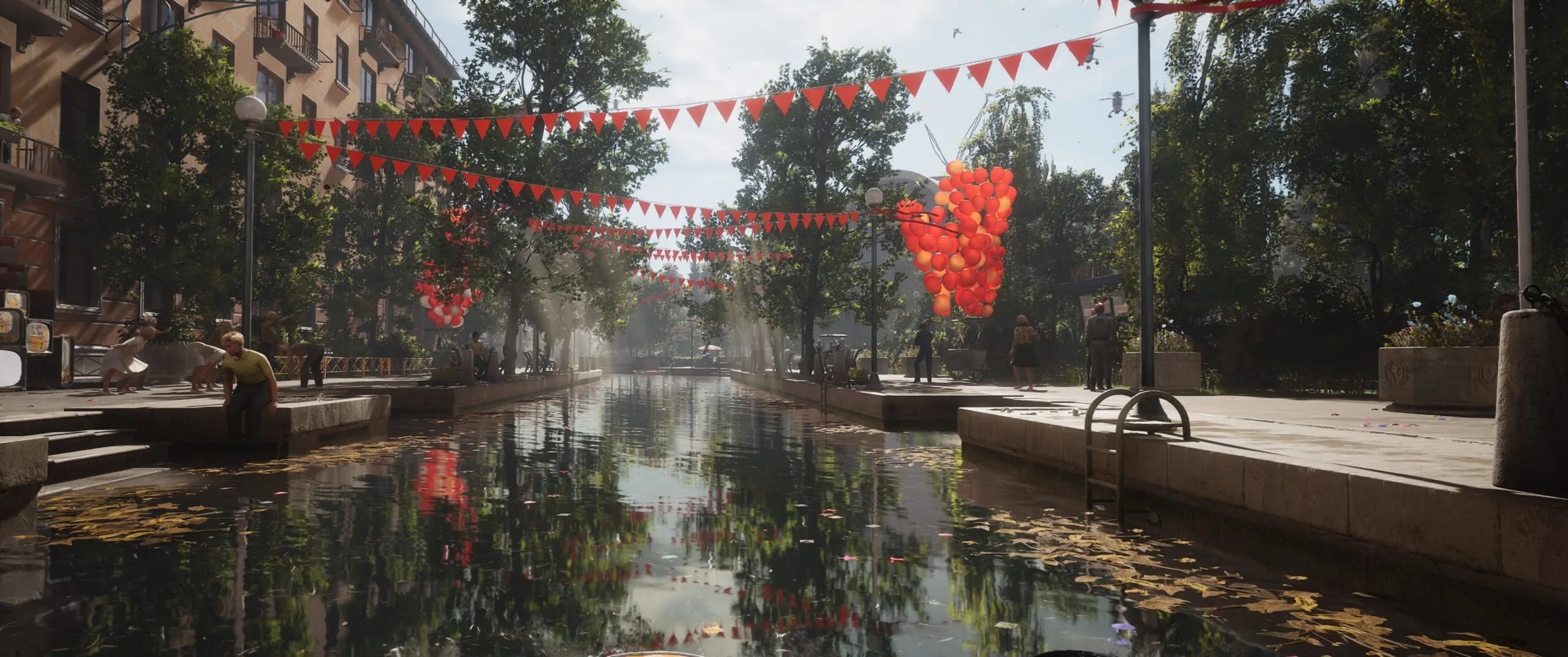
Steam Deck users can also rejoice. This is another well-optimized game that runs at a steady locked 30fps or can run in the medium to high 50s steady and even higher with unlocked FPS plus FSR. However, some menu systems are unreadable when everything is set to low with FSR on. There is an image sharpening setting that should be increased to at least 2 if you plan to playing with low settings.
We do not recommend playing on low – the FPS gains are not worth it. You can freely enjoy the graphics and combat at medium settings with a very playable performance at 30 FPS. But the High preset was a struggle with dips well below 30 FPS. I was able to run everything using the Medium preset with Fidelity FX super-resolution set to quality with 30 FPS locked with only rare dips. I play at this level to increase battery life, but if you are plugged in – uncap your FPS and enjoy a well-polished experience for your Steam Deck. The PS5 and Xbox Series X can run this game at 4K/60 FPS with dynamic resolution so that should be a delightful experience as well.
One of the most egregious omissions is a lack of a FOV slider. This is common on consoles but it’s sorely missing here I often felt the default FOV was way too narrow for my liking and my wife felt motion sickness and vertigo while watching me play. A simple slider would have been great. This is, however, a PC port that runs amazingly well, and doesn’t even need FSR or DLSS 3. This is something that should be celebrated in a world where PC ports are often seen as afterthoughts with little care compared with their console brethren.
Atomic Heart sadly does not have ray tracing on any platform at launch. This is strange as Nvidia and Mundfish heavily advertised ray tracing and it looked amazing when it was shown. Our only hope is that its last minute removal was due to a bug that can be easily fixed and not because it would cause crippling performance on older cards. There’s no way to turn raytracing on in the settings on PC, PS5, or Xbox Series X|S so we will have to wait and see.
Final Thoughts:
The dark undertones of Atomic Heart exist and are a setting I was extremely excited to visit. It’s truly wonderful experiencing some gaming moments on modern technology. Some scripted introduction scenes felt exactly like that – the grand introduction to this game in particular lets intense moments sink in and it’s extremely beautiful. If anything I would recommend trying this game out just for those sequences alone.
There are many things that work well for Atomic Heart that are completely worth the price of admission. Anyone with GamePass should try it for themselves and enjoy a potentially great game. After some patches and desperately needed repair bot and enemy density balancing, this could be a real gem. Despite a promising setting and inspiration, its writing may be off-putting especially if one is easily offended. Tightening up these sequences and fixing some audio issues will make this game infinitely better.
Did I have fun? Hell yes! Will I recommend Atomic Heart as a GOTY contender for 2023? No. Those looking for an interesting game that wears its heart on its sleeve will be heavily rewarded. It is an odd and enjoyable retro blast precisely because it was reminiscent of some of the great classic games of our past. Atomic Heart continues to grow on you even if it’s not an entirely cohesive or balanced experience.
Atomic Heart releases tomorrow, Feb 21st, for Microsoft Windows, PlayStation 4, PlayStation 5, Xbox One, and Xbox Series X/S February 21, 2023. Nvidia provided this review copy for BTR.
We score Atomic Heart at a solid 6.5/10.
